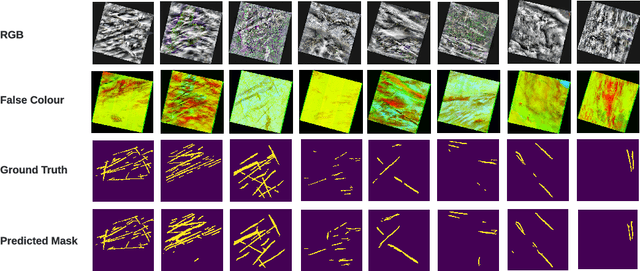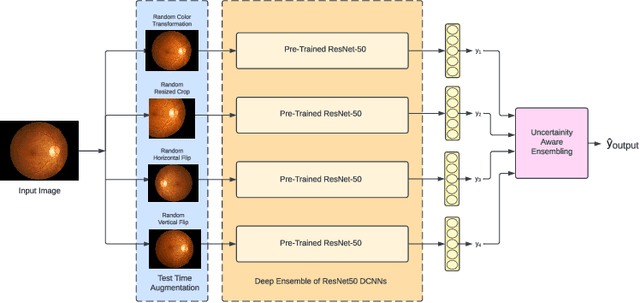Akshat Bhandari
Analyzing Effects of Fake Training Data on the Performance of Deep Learning Systems
Mar 02, 2023Abstract:Deep learning models frequently suffer from various problems such as class imbalance and lack of robustness to distribution shift. It is often difficult to find data suitable for training beyond the available benchmarks. This is especially the case for computer vision models. However, with the advent of Generative Adversarial Networks (GANs), it is now possible to generate high-quality synthetic data. This synthetic data can be used to alleviate some of the challenges faced by deep learning models. In this work we present a detailed analysis of the effect of training computer vision models using different proportions of synthetic data along with real (organic) data. We analyze the effect that various quantities of synthetic data, when mixed with original data, can have on a model's robustness to out-of-distribution data and the general quality of predictions.
Performance evaluation of deep segmentation models on Landsat-8 imagery
Nov 30, 2022

Abstract:Contrails, short for condensation trails, are line-shaped ice clouds produced by aircraft engine exhaust when they fly through cold and humid air. They generate a greenhouse effect by absorbing or directing back to Earth approximately 33% of emitted outgoing longwave radiation. They account for over half of the climate change resulting from aviation activities. Avoiding contrails and adjusting flight routes could be an inexpensive and effective way to reduce their impact. An accurate, automated, and reliable detection algorithm is required to develop and evaluate contrail avoidance strategies. Advancement in contrail detection has been severely limited due to several factors, primarily due to a lack of quality-labeled data. Recently, proposed a large human-labeled Landsat-8 contrails dataset. Each contrail is carefully labeled with various inputs in various scenes of Landsat-8 satellite imagery. In this work, we benchmark several popular segmentation models with combinations of different loss functions and encoder backbones. This work is the first to apply state-of-the-art segmentation techniques to detect contrails in low-orbit satellite imagery. Our work can also be used as an open benchmark for contrail segmentation and is publicly available.
UATTA-ENS: Uncertainty Aware Test Time Augmented Ensemble for PIRC Diabetic Retinopathy Detection
Nov 08, 2022

Abstract:Deep Ensemble Convolutional Neural Networks has become a methodology of choice for analyzing medical images with a diagnostic performance comparable to a physician, including the diagnosis of Diabetic Retinopathy. However, commonly used techniques are deterministic and are therefore unable to provide any estimate of predictive uncertainty. Quantifying model uncertainty is crucial for reducing the risk of misdiagnosis. A reliable architecture should be well-calibrated to avoid over-confident predictions. To address this, we propose a UATTA-ENS: Uncertainty-Aware Test-Time Augmented Ensemble Technique for 5 Class PIRC Diabetic Retinopathy Classification to produce reliable and well-calibrated predictions.
Evaluating Predictive Uncertainty and Robustness to Distributional Shift Using Real World Data
Nov 08, 2021



Abstract:Most machine learning models operate under the assumption that the training, testing and deployment data is independent and identically distributed (i.i.d.). This assumption doesn't generally hold true in a natural setting. Usually, the deployment data is subject to various types of distributional shifts. The magnitude of a model's performance is proportional to this shift in the distribution of the dataset. Thus it becomes necessary to evaluate a model's uncertainty and robustness to distributional shifts to get a realistic estimate of its expected performance on real-world data. Present methods to evaluate uncertainty and model's robustness are lacking and often fail to paint the full picture. Moreover, most analysis so far has primarily focused on classification tasks. In this paper, we propose more insightful metrics for general regression tasks using the Shifts Weather Prediction Dataset. We also present an evaluation of the baseline methods using these metrics.
 Add to Chrome
Add to Chrome Add to Firefox
Add to Firefox Add to Edge
Add to Edge